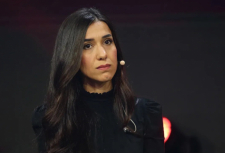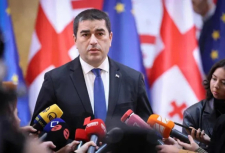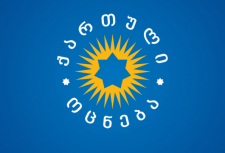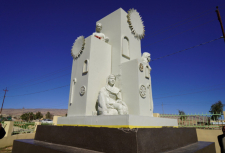Do Yazidis speak Kurdish?

Part 2
Yilmaz Algin | ÊzîdîPress
Often in articles and notes you can find that the Yazidis are Kurdish-speaking. So, is this statement correct if we have already noted that most Yazidis use the name "ezdiki" for their language? For example, it would be foolish to claim that Indians speak Urdu or Pakistanis speak Hindi. The same applies to the Serbs and Bosnians with respect to the Serbian and Bosnian languages.
The question of how to define the Kurdish language still has no clear answer among scholars. Kurds themselves generally hold the view that Kurdish is a language with different dialects, such as Kurmanji, Sorani, Zazaki, and Gorani. This is also stated in the Kurmanji language version of Wikipedia, while in the English and German editions of this encyclopedia we are talking about" Kurdish languages " in the plural.
There is no consensus among linguists on how to distinguish a language from a dialect. Probably the most common view of the distinction between language and dialect is based on the criterion of mutual intelligibility. According to this thesis, all mutually intelligible language varieties are a dialect of one language, and not mutually intelligible ones form independent languages. But even this criterion of differentiation was not convincing and therefore did not lead to a consensus. In addition, it demonstrates the following problem: in the continuum of a dialect, i.e., in a dialect. in the chain of intelligible language varieties, there may be similarities with other languages outside this continuum, while other language varieties in the dialect continuum may not have this similarity. Thus, based on the criterion of mutual intelligibility, it is impossible to distinguish clear boundaries of the separation of language and dialect. As a result, the question arises whether the distinction is scientifically valid at all. The distinction between language and dialect is often made for social and political reasons rather than scientific ones. For the same reasons, the name of the language can also be omitted, and if it is to be used to establish a connection with ethnicity and / or the native country, the linguonym must correspond to the ethnonym and / or toponym (example: German — Germany). Therefore, these classifications are not natural, but artificial.
It is quite possible that a person who does not speak German perfectly (there are people in the United States whose ancestors emigrated there before completing compulsory school education) can understand Dutch better than the Bavarian dialect. Other examples are Swedish, Norwegian, and Danish. Sometimes two people who speak these different languages can understand each other better than people who speak the same language. Here we can see that the classification of ethnic groups using the language criterion is artificial, and not predetermined by nature. The same applies to other characteristics, such as race, culture, origin, etc. This understanding is now recognized in the serious social sciences (in the now prevailing constructivist approach), which contradicts many nationalist-ideological views. The world's most famous nationalist theorists describe nations and ethnic groups as " imaginary communities "(Benedict Anderson) and" contingents "(Ernest Gellner); their origins are based on" invented traditions " (Eric Hobsbawm).
For example, theorists of Kurdish nationalism have developed a thesis about the ethnic continuity of the Kurds, whose history goes back thousands of years. The Yazidis are represented by them as true Kurds (so-called "Kurdên resen") with a "Kurdish-speaking" religion, who did not convert to Islam (a foreign element in their understanding) and thus retained the "original religion of the Kurds". However, the thesis of a common ethnic continuity is a purely ideological construct for legitimizing nationalism. Today, there are many Yazidis who have accepted this theory and believe in it. This is an example of how the ethnic self-determination of a group can be changed by an ideological narrative that has little to do with real history. Ernest Renan, in his famous speech entitled "What is a nation" on March 11, 1882, stated: "Oblivion, or rather historical error, is one of the main factors in the creation of a nation, and therefore the progress of historical research often poses a danger to the nationality." In fact, before the collapse of the Ottoman Empire, which coincided with the rise of nationalism in the region, the Kurds and Yazidis were considered separate communities. Ethnic consciousness was alien to the spirit of the time and the Ottoman Millet system classified groups based on religious affiliation. And here it is not necessary to track the ethnogenesis of the Yazidis through the prism of historical facts. This also applies to the language.
Kurds who speak different Kurdish dialects, such as Kurmanji, Zazaki, Sorani and Gorani, in most cases cannot easily communicate with each other, although they consider all these language varieties as a Kurdish language. There are even those who try to classify Luri, then as an independent language, a dialect of the Kurdish language or a dialect of the Persian language. And in this case, the criteria of mutual understanding are not considered. But the diversity of a community does not necessarily exclude its character as an ethnic group or nation. There are countries with multiple languages, such as Switzerland. And the presence of a common language is not an indicator of ethnic unity. Often, different countries have the same official language. On the other hand, individual groups that speak a common language with the Kurds do not necessarily belong to the Kurdish ethnic group.
Thus, as previously stated, the use of the name "ezdiki" is not erroneous and cannot be equated with the Kurdish language, because, on the one hand, the Kurdish language cannot be clearly distinguished based on objective criteria (since the difference between languages and dialects is often subjective), on the other hand, different groups that speak the same language can use completely different linguonyms. The only thing that is objectively true is that Kurmanji and Ezdiki are the same variety of languages.
Tags: #yazidisinfo #newsyazidi #aboutyazidi #ezidi #language
Do Yazidis speak Kurdish?

Part 2
Yilmaz Algin | ÊzîdîPress
Often in articles and notes you can find that the Yazidis are Kurdish-speaking. So, is this statement correct if we have already noted that most Yazidis use the name "ezdiki" for their language? For example, it would be foolish to claim that Indians speak Urdu or Pakistanis speak Hindi. The same applies to the Serbs and Bosnians with respect to the Serbian and Bosnian languages.
The question of how to define the Kurdish language still has no clear answer among scholars. Kurds themselves generally hold the view that Kurdish is a language with different dialects, such as Kurmanji, Sorani, Zazaki, and Gorani. This is also stated in the Kurmanji language version of Wikipedia, while in the English and German editions of this encyclopedia we are talking about" Kurdish languages " in the plural.
There is no consensus among linguists on how to distinguish a language from a dialect. Probably the most common view of the distinction between language and dialect is based on the criterion of mutual intelligibility. According to this thesis, all mutually intelligible language varieties are a dialect of one language, and not mutually intelligible ones form independent languages. But even this criterion of differentiation was not convincing and therefore did not lead to a consensus. In addition, it demonstrates the following problem: in the continuum of a dialect, i.e., in a dialect. in the chain of intelligible language varieties, there may be similarities with other languages outside this continuum, while other language varieties in the dialect continuum may not have this similarity. Thus, based on the criterion of mutual intelligibility, it is impossible to distinguish clear boundaries of the separation of language and dialect. As a result, the question arises whether the distinction is scientifically valid at all. The distinction between language and dialect is often made for social and political reasons rather than scientific ones. For the same reasons, the name of the language can also be omitted, and if it is to be used to establish a connection with ethnicity and / or the native country, the linguonym must correspond to the ethnonym and / or toponym (example: German — Germany). Therefore, these classifications are not natural, but artificial.
It is quite possible that a person who does not speak German perfectly (there are people in the United States whose ancestors emigrated there before completing compulsory school education) can understand Dutch better than the Bavarian dialect. Other examples are Swedish, Norwegian, and Danish. Sometimes two people who speak these different languages can understand each other better than people who speak the same language. Here we can see that the classification of ethnic groups using the language criterion is artificial, and not predetermined by nature. The same applies to other characteristics, such as race, culture, origin, etc. This understanding is now recognized in the serious social sciences (in the now prevailing constructivist approach), which contradicts many nationalist-ideological views. The world's most famous nationalist theorists describe nations and ethnic groups as " imaginary communities "(Benedict Anderson) and" contingents "(Ernest Gellner); their origins are based on" invented traditions " (Eric Hobsbawm).
For example, theorists of Kurdish nationalism have developed a thesis about the ethnic continuity of the Kurds, whose history goes back thousands of years. The Yazidis are represented by them as true Kurds (so-called "Kurdên resen") with a "Kurdish-speaking" religion, who did not convert to Islam (a foreign element in their understanding) and thus retained the "original religion of the Kurds". However, the thesis of a common ethnic continuity is a purely ideological construct for legitimizing nationalism. Today, there are many Yazidis who have accepted this theory and believe in it. This is an example of how the ethnic self-determination of a group can be changed by an ideological narrative that has little to do with real history. Ernest Renan, in his famous speech entitled "What is a nation" on March 11, 1882, stated: "Oblivion, or rather historical error, is one of the main factors in the creation of a nation, and therefore the progress of historical research often poses a danger to the nationality." In fact, before the collapse of the Ottoman Empire, which coincided with the rise of nationalism in the region, the Kurds and Yazidis were considered separate communities. Ethnic consciousness was alien to the spirit of the time and the Ottoman Millet system classified groups based on religious affiliation. And here it is not necessary to track the ethnogenesis of the Yazidis through the prism of historical facts. This also applies to the language.
Kurds who speak different Kurdish dialects, such as Kurmanji, Zazaki, Sorani and Gorani, in most cases cannot easily communicate with each other, although they consider all these language varieties as a Kurdish language. There are even those who try to classify Luri, then as an independent language, a dialect of the Kurdish language or a dialect of the Persian language. And in this case, the criteria of mutual understanding are not considered. But the diversity of a community does not necessarily exclude its character as an ethnic group or nation. There are countries with multiple languages, such as Switzerland. And the presence of a common language is not an indicator of ethnic unity. Often, different countries have the same official language. On the other hand, individual groups that speak a common language with the Kurds do not necessarily belong to the Kurdish ethnic group.
Thus, as previously stated, the use of the name "ezdiki" is not erroneous and cannot be equated with the Kurdish language, because, on the one hand, the Kurdish language cannot be clearly distinguished based on objective criteria (since the difference between languages and dialects is often subjective), on the other hand, different groups that speak the same language can use completely different linguonyms. The only thing that is objectively true is that Kurmanji and Ezdiki are the same variety of languages.
Tags: #yazidisinfo #newsyazidi #aboutyazidi #ezidi #language


























